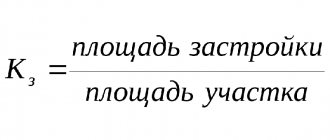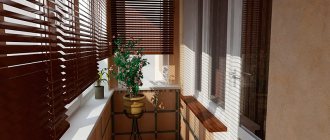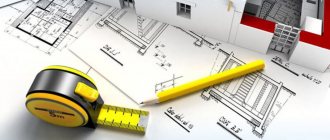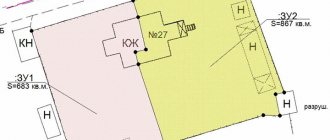Commentary to Art. 15 Residential Complex of the Russian Federation
1. Residential is understood as an isolated premises, which is real estate and is suitable for permanent residence (meets established sanitary and technical rules and regulations, and other legal requirements). It follows from this that residential premises are intended for the residence of citizens. They can be in state ownership (Article 214 of the Civil Code of the Russian Federation), municipal property (Article 215 of the Civil Code of the Russian Federation), in the ownership of citizens and legal entities (Article 213 of the Civil Code of the Russian Federation), which is reflected in Part 2 of Art. 19 Housing Code of the Russian Federation.
Let's consider the characteristics of the object of housing rights.
Firstly, this is an isolated room.
However, let us turn to Art. 76 of the Housing Code of the Russian Federation, according to which the tenant of a residential premises under a social tenancy agreement has the right to sublease part of the residential premises, i.e. and part of the room.
Thus, the object of housing rights can be not only an isolated premises; whereas the subject (object) of a housing rental agreement can only be an isolated residential premises (Article 62 of the Housing Code of the Russian Federation, Article 673 of the Civil Code of the Russian Federation).
Secondly, this is a living space. A necessary characteristic of housing is its purpose for the residence of citizens. This position is contained in Art. 17 Housing Code of the Russian Federation (Part 1). Only a room that is functionally intended for living is considered residential. Article 288 of the Civil Code of the Russian Federation (clause 2) establishes: “Residential premises are intended for the residence of citizens.”
Hotels, sanatoriums, holiday homes, boarding houses, etc. have a different functional purpose, i.e. are a place of rest and treatment. Such premises are used for temporary stay, as opposed to a place of residence. Place of residence according to Art. 20 of the Civil Code of the Russian Federation recognizes the place where a citizen permanently or primarily resides.
Thirdly, this is a premises suitable for permanent residence. This means that in terms of area, layout, illumination, insolation, microclimate, air exchange, levels of noise, vibration, ionizing and other radiation, it must comply with sanitary rules in order to ensure safe and harmless living conditions (Article 23 of the Federal Law of March 30, 1999 N 52-FZ “On the sanitary and epidemiological welfare of the population”). In addition to sanitary rules, residential premises must comply with technical rules and regulations, other legal requirements: stationary structure, the presence of certain types of amenities, auxiliary premises, etc.
2. The commented article does not mention such a requirement as landscaping. However, what is important for a person is the comfort of living, the sum of the consumer qualities of housing. An essential part of comfort is landscaping. It follows that a residential premises must meet not only sanitary and technical requirements, but also a certain degree of improvement in order for it to be the object of housing rights.
Requirements to provide residential premises with certain types of “improvement” are contained in the Regulations on the recognition of premises as residential premises, residential premises unsuitable for habitation and an apartment building as unsafe and subject to demolition, approved. Decree of the Government of the Russian Federation dated January 28, 2006 N 47.
The degree of improvement in cities and other settlements varies. In this regard, the wording of Art. 40 of the Housing Code of the RSFSR (“Requirements for residential premises”): residential premises provided for citizens to live in must be well-equipped “in relation to the conditions of a given locality.”
3. The procedure for recognizing a premises as residential and the requirements that it must meet are established by the Government of the Russian Federation (Part 3 of the commented article). The grounds and procedure for recognizing residential premises as unfit for habitation are also established by the Government of the Russian Federation (Part 4 of the commented article).
The Government of the Russian Federation adopted Resolution No. 47 of January 28, 2006, which approved the Regulations on recognizing premises as residential premises, residential premises unsuitable for habitation and an apartment building as unsafe and subject to demolition or reconstruction.
According to this Regulation, residential buildings and residential premises are considered unsuitable for living: having a certain physical wear and tear; in disrepair; in which the harmful effects of environmental factors have been identified (Section III of the Regulations).
Thus, unsuitability is determined by the degree of deterioration of housing (the extreme degree is the accident rate), namely: the presence of irreparable faults in utility networks, non-compliance with building codes when developing the territory close to the house, etc.
The criteria for classifying housing as unsuitable due to the harmful effects of environmental factors are provided for by state sanitary and epidemiological rules and regulations.
Issues regarding the recognition of residential buildings (residential premises) as unfit for habitation are resolved by interdepartmental commissions.
The federal executive body creates, in accordance with the procedure established by it, a commission to evaluate residential premises of the housing stock of the Russian Federation. The commission includes representatives of this federal executive body. An official of the specified federal executive body is appointed as the chairman of the commission.
In the same way, they create their own commissions: the executive body of the constituent entity of the Russian Federation - to assess the residential premises of the regional housing stock; local government body - to assess the residential premises of the municipal housing stock.
The owner of the housing stock or a representative of the owner performing the functions of managing the housing stock, in relation to the residential building (residential premises) of which the issue of declaring it unfit for habitation, and, if necessary, a representative of design and survey organizations, should be involved in the work of the commission, who carried out the inspection of this residential building (residential premises).
The commission, based on an application from the owner of the premises or an application from a citizen (tenant) or on the conclusion of state control and supervision bodies, assesses the compliance of the premises with the requirements established in the Regulations.
After studying the submitted documents, the list of which is provided for in clause 45 of the Regulations, and, if necessary, inspecting the residential building (residential premises), the commission makes a decision:
on the suitability of a residential building (residential premises) for living;
on the need and possibility of carrying out major repairs, reconstruction or redevelopment (if necessary, with a feasibility study) in order to bring the characteristics of the residential premises lost during operation into compliance with the requirements established in the Regulations and after their completion - on the continuation of the assessment procedure;
This is important to know: Renewal of a personal account for an apartment: where to apply, documents
on the unsuitability of a residential building (residential premises) for habitation, indicating defects that cannot be eliminated technically or the elimination of which is not economically feasible, and the criteria for unsuitability;
on recognizing an apartment building as unsafe and subject to demolition or reconstruction (clause 47).
The decision of the commission can be appealed by interested parties in court.
If a residential building (residential premises) is declared unfit for habitation due to an emergency condition or the harmful effects of environmental factors that pose a particular danger to the life and health of people, the decision must indicate to the owner (a person authorized by the owner) the need to immediately resettle citizens.
4. In accordance with Part 5 of the commented article, the total area of a residential premises consists of the sum of the areas of all parts of such premises, including the area of auxiliary premises intended to satisfy citizens’ household and other needs related to their residence in residential premises, with the exception of balconies, loggias, verandas, terraces.
Section IV. Specialized housing stock
Chapter 9. Residential premises of specialized housing stock
- Article 92. Types of residential premises of specialized housing stock
- Article 93. Purpose of service residential premises
- Article 94. Purpose of residential premises in dormitories
- Article 95. Purpose of residential premises of the maneuverable fund
- Article 96. Purpose of residential premises in houses of the social service system for citizens
- Article 97. Designation of residential premises of funds for temporary settlement of internally displaced persons and persons recognized as refugees
- Article 98. Purpose of residential premises for social protection of certain categories of citizens
- Article 98.1. Purpose of residential premises for orphans and children left without parental care, persons from among orphans and children left without parental care
Chapter 10. Provision of specialized residential premises and their use
- Article 99. Grounds for the provision of specialized residential premises
- Article 100. Lease agreement for specialized residential premises
- Article 101. Termination of a rental agreement for specialized residential premises
- Article 102. Termination of a rental agreement for specialized residential premises
- Article 103. Eviction of citizens from specialized residential premises
- Article 104. Provision of official residential premises
- Article 105. Provision of residential premises in dormitories
- Article 106. Provision of residential premises of the maneuverable fund
- Article 107. Provision of residential premises in houses of the social service system for citizens
- Article 108. Provision of residential premises to funds for temporary settlement of internally displaced persons and persons recognized as refugees
- Article 109. Provision of residential premises for social protection of certain categories of citizens
- Article 109.1. Providing residential premises for orphans and children without parental care, persons from among orphans and children without parental care
Article 15. Objects of housing rights
1. The objects of housing rights are residential premises.
2. Residential premises are recognized as isolated premises, which are real estate and are suitable for permanent residence of citizens (meet the established sanitary and technical rules and regulations, and other legal requirements (hereinafter referred to as the requirements).
3. The procedure for recognizing premises as residential premises and the requirements that residential premises must meet, including for its adaptation and adaptation of common property in an apartment building taking into account the needs of people with disabilities, are established by the Government of the Russian Federation in accordance with this Code and other federal laws.
4. Residential premises may be declared unfit for habitation on the grounds and in the manner established by the Government of the Russian Federation.
5. The total area of a residential premises consists of the sum of the area of all parts of such premises, including the area of auxiliary premises intended to satisfy citizens’ household and other needs related to their residence in residential premises, with the exception of balconies, loggias, verandas and terraces.
One apartment, but different areas
As Maria Obolenskaya, a lawyer in the real estate and investment practice at Kachkin and Partners, notes, the concept of “total area of residential premises” is used in the following cases: to determine the tax base for the property tax of individuals, to determine the price of an equity participation agreement (DDU) in construction, when providing housing under a social rental agreement, when providing a number of benefits (for example, to calculate monetary compensation for renting residential premises to military personnel), etc.
We recommend reading: 52 Federal Law on silence
Commentary to Art. 15 Residential Complex of the Russian Federation
1. In accordance with the most common point of view, the object of the legal relationship is what this legal relationship is about. Housing legal relations arise regarding residential premises. Therefore, Part 1 of the commented article states that the objects of housing rights are residential premises.
2. An isolated premises intended for the residence of citizens is considered residential. Traditionally, isolated premises are those that have autonomous access to common areas (corridor, hallway, landing, etc.) or to the street (see also commentary to Article 16 of the Housing Code).
3. At first glance, the indication that a residential premises is recognized as an isolated premises, which is real estate, is devoid of legal content. Moreover, by virtue of Art. 1 of the Federal Law of July 21, 1997 N 122-FZ “On state registration of rights to real estate and transactions with it” (hereinafter referred to as the Law on Registration of Rights), residential premises are classified as real estate. However, this instruction makes sense. ——————————— NW RF. 1997. N 30. Art. 3594.
Unfortunately, a considerable number of citizens still live in prefabricated houses, trailers, beams, etc. Such objects are not real estate (there is no strong connection with the land). Relations regarding their use for living are not regulated by housing legislation (in appropriate cases, the norms of civil law on property lease (lease) agreements are applied). This is precisely what is emphasized by the indication that the living quarters, i.e. a thing that is the object of housing rights is recognized as a premises related to real estate.
4. Only those premises that are suitable for permanent residence of citizens are considered residential. Here (in Part 2 of the commented article) it is explained in which cases an apartment, house and other premises are considered suitable for permanent residence - they must meet established sanitary and technical rules and regulations, and other legal requirements. To resolve the issue of compliance of a particular premises with these requirements, materials from the technical inventory bureau, sanitary and epidemiological services, conclusions of technical (and other) examinations, etc. are used.
5. The procedure for recognizing premises as residential and the requirements that residential premises must meet are established by the Government of the Russian Federation, which, by Resolution No. 47 of January 28, 2006, approved the Regulations on recognizing premises as residential premises, residential premises unsuitable for habitation and an apartment building as unsafe and subject to demolition or reconstruction.
The effect of this Regulation applies to residential premises in operation located on the territory of Russia (clause 2), regardless of the form of ownership and does not apply to residential premises located in capital construction projects, the commissioning of which and registration with the state have not been carried out in in accordance with the Town Planning Code of the Russian Federation (clause 3).
6. The recognition of a premises as residential, suitable (unsuitable) for citizens to live in, as well as an apartment building as unsafe and subject to demolition or reconstruction is carried out by an interdepartmental commission created for these purposes.
Depending on the type of housing stock by form of ownership, the interdepartmental commission is created, respectively, by the federal executive body, the executive body of the subject of the Federation, or the local government body. The commission includes representatives of the body that decided to create it, as well as representatives of bodies authorized to carry out state control and supervision in the areas of sanitary-epidemiological, fire, industrial, environmental and other safety, consumer rights protection and human well-being, to carry out inventory and rehabilitation of real estate objects. Where necessary, representatives of architecture, urban planning and other relevant organizations are also involved.
The owner of the residential premises (the person authorized by him) is involved in the work of the commission with the right of an advisory vote, and, in necessary cases, experts from design and survey organizations with the right of a casting vote.
A representative of the body that made the decision to create it is appointed as the chairman of the commission (clause 7 of the said Regulations).
A local government body has the right to make a decision on recognizing private residential premises located on the relevant territory as suitable (unsuitable) for citizens to live in and delegate to an interdepartmental commission the authority to assess the compliance of these premises with established requirements and to make a decision on recognizing these premises as suitable (unsuitable) for living. citizens (clause 8 of the Regulations). ——————————— The given instructions on the powers of the interdepartmental commission contained in the Regulations under consideration appear to be contrary to the law. Thus, the recognition of residential premises of the housing stock of a subject of the Federation as unsuitable for habitation is the responsibility of the state authorities of the subject of the Federation (Clause 6, Article 13 of the Housing Code). The recognition of residential premises of the municipal housing stock as unsuitable for habitation must be carried out by local government bodies (clause 8, part 1, article 14 of the Housing Code). It is clear that the interdepartmental commission cannot be considered either a state authority or a local government body (strangely, the Resolution of the Plenum of the Armed Forces of the Russian Federation dated July 2, 2009 refers to this commission as a body (clause 22)).
7. The said Regulations define in sufficient detail for an act of this level the requirements that a residential premises must meet. In particular, requirements are formulated for the load-bearing and enclosing structures of residential premises (clause 10), the arrangement and equipment of residential premises and the common property of premises owners in an apartment building (primarily in order to prevent the risk of injury, ensure the convenience and safety of movement and accommodation (clause 11)), engineering systems (clauses 12 - 14), etc. The regulation stipulates that residential premises, as well as premises that are part of the common property of premises owners in an apartment building, must be protected from the penetration of rain, melt and ground water and possible domestic water leaks from engineering systems (clause 16); access to residential premises located in an apartment building above the fifth floor, with the exception of the attic floor, must be provided using an elevator (clause 17); placement of residential premises in the basement and ground floors is not allowed (clause 23); placement of a toilet, bathroom (shower) and kitchen above the rooms is not allowed (equipment of a toilet, bathroom (shower) on the upper level above the kitchen is possible in apartments located on two levels (clause 24), etc.
This is important to know: How is the total area divided in a communal apartment?
The Regulations also contain requirements for space-planning solutions for residential premises (clause 20), insolation (clause 21), height of premises (clause 22), electric field strength, magnetic field induction (clause 30), etc. At the same time Regulatory and technical instructions are often formulated. Thus, in a living room at a distance of 0.2 m from walls and windows and at a height of 0.5 - 1.8 m from the floor, the electric field strength of an industrial frequency of 50 Hz and the magnetic field induction of an industrial frequency of 50 Hz should not exceed 0.5, respectively kV/m and 10 µT (item 30); inside a residential premises, the equivalent radiation dose rate should not exceed the dose rate permissible for an open area by more than 0.3 μSv/h, and the average annual volumetric activity of radon in the air of operated premises should not exceed 200 Bq/cubic meter. m (clause 31).
Naturally, reference standards are also used to determine the requirements that residential premises must meet. Thus, in a residential area, permissible levels of vibration from internal and external sources during the day and at night must correspond to the values established in the current regulatory legal acts (clause 27). Similar guidance is given regarding the permissible level of infrasound (clause 28).
In some cases, requirements are defined by reference while setting a limit. For example, in a residential building, permissible sound pressure levels in octane frequency bands, equivalent and maximum sound and penetrating noise levels must correspond to the values established in regulatory legal acts, and not exceed the maximum permissible sound level in rooms and apartments during the daytime - 55 dB , at night - 45 dB (p. 26).
Sometimes requirements for residential premises are formulated using rating categories. Thus, the load-bearing and enclosing structures of a residential premises must be in a working condition in which violations that arise during operation, in particular deformability (and in reinforced concrete structures - crack resistance), do not lead to disruption of the operability and load-bearing capacity of the structures, the reliability of the residential building and ensure safe stay of citizens and safety of engineering equipment (clause 10).
Thus, determining whether a premises meets the requirements for residential premises is a rather complex process. You have to refer to a large number of regulations, conduct examinations, measurements, etc. and so on.
8. In the case when a residential house (building) is erected in accordance with the procedure established by law and put into operation, such an act as recognizing this house (premises located in it) as residential (residential) is not required. Recognition of a premises as residential in this case is limited to actions that mediate its commissioning (including checking whether it meets the requirements for residential premises), state registration and state registration of the right to it (as a residential premises).
From the above it follows that the rules contained in the above-mentioned Regulations, approved in pursuance of the instructions of Parts 3 and 4 of the commented article, apply in the following cases.
Firstly, when deciding on the transfer of non-residential premises to residential ones. In particular, such a transfer is unacceptable if the corresponding premises do not meet the established requirements or there is no opportunity to ensure compliance with the requirements (Part 4 of Article 22 of the Housing Code).
Secondly, when establishing whether the premises used as housing and, from a legal point of view, are considered residential premises, are suitable for living.
Thirdly, when deciding on the recognition of an apartment building in operation as unsafe and subject to demolition.
9. Earlier we talked about the objective, relatively speaking, grounds for recognizing residential premises as suitable (unsuitable) for living. Apparently, it is also necessary to highlight subjective circumstances that may indicate the suitability (or unsuitability) of a particular residential premises for the residence of specific persons. The Regulations, in particular, establish that separate residential premises may be considered unsuitable for residence of “disabled people and other low-mobility groups of the population who use wheelchairs due to illness” (clause 54). It seems that residential premises should be recognized as unsuitable for living by certain categories of citizens in the presence of “medical criteria”, regardless of whether wheelchairs are required, whether these citizens have them and whether they use them.
10. Summarizing what was stated when commenting on the rules contained in parts 3, 4 of this article, it can be noted that the basis for declaring a residential premises unsuitable for habitation is the presence of identified harmful factors in the human environment that do not allow ensuring the safety of life and health of citizens due to deterioration of the building as a whole or its individual parts, operational characteristics leading to a decrease in the reliability of the building, the strength and stability of building structures and foundations to an unacceptable level.
Residential premises that have a high percentage of physical wear and tear are considered unsuitable for living; located in sanitary protection, fire and explosion hazardous industrial zones, in hazardous areas of rock dumps of coal, shale mines and processing plants, areas of landslides, mudflows and snow avalanches, in territories annually flooded by flood waters; after an accident, fire, natural or man-made disaster, if restoration work is technically impossible or impractical from an economic point of view, etc.
11. In previous legislation, legal significance was usually attached not to the entire (total) area of an apartment or residential building, but only to the living area. It included only the area of the actual living quarters (rooms) and did not take into account the area of the hallway, corridor, kitchen, bathroom, etc. (according to previously accepted terminology - “utility rooms and common areas”). Currently, these facilities are referred to in the Housing Code of the Russian Federation (including in Part 5 of the commented article) as “premises for auxiliary use, intended to satisfy citizens’ household and other needs.” For example, housing was provided within the standard living area, i.e. no more than 12 sq. m of living space for each family member (Article 40 of the RSFSR Housing Code). Only living space was paid (the size of utility rooms and common areas did not matter).
In recent years, in various legal acts (including federal laws), legal significance has increasingly been given not to residential space, but to the total area of residential premises (apartments, houses). In the Housing Code of the Russian Federation, this trend has received complete design. Thus, the accounting norm and the provision norm are established based on the total (and not residential) area of the residential premises (see Article 50 of the Housing Code and the corresponding commentary). The amount of payment for rent, maintenance and repair of residential premises for tenants under social tenancy agreements and commercial rental agreements for residential premises of state and municipal housing funds is determined based on the occupied total area of the residential premises (see Part 2 of Article 156 of the Housing Code and commentary to her).
This is important to know: Fire safety requirements in multi-apartment residential buildings: rules
In this regard, it is necessary to establish what is included in the total area of an apartment or other object of housing rights. This problem is solved in part 5 of the commented article. The essence of the norm contained in it is that the total area includes everything that forms a given object of housing rights (living rooms, hallway, corridor, kitchen, dressing room, bathroom, toilet, etc.), with the exception of the objects indicated here (balconies , loggias, verandas and terraces). The list of exceptions is formulated imperatively and as exhaustive, i.e. no other federal law, other legal act or agreement can change or supplement it.
Section X. Licensing of activities for the management of apartment buildings
Chapter 19. Licensing of activities for the management of apartment buildings
- Article 192. Licensing of activities for the management of apartment buildings
- Article 193. Licensing requirements
- Article 194. Procedure for making a decision on granting a license or refusing to grant a license
- Article 195. Registers of information containing information on licensing activities for the management of apartment buildings
- Article 196. Procedure for organizing and implementing licensing control
- Article 197. The procedure for informing local government bodies, owners of premises in an apartment building and other interested parties about decisions made by the licensing commission and the state housing supervision body
- Article 198. The procedure for the licensee to post information about apartment buildings, the management of which is carried out by the licensee. Grounds and procedure for entering information about an apartment building into the register of licenses of a constituent entity of the Russian Federation, excluding information about an apartment building from the said register
- Article 199. Cancellation of a license and termination of its validity
- Article 200. Termination of activities related to the management of apartment buildings due to the exclusion of information about the apartment building from the register of licenses of a constituent entity of the Russian Federation, termination of the license or its cancellation
- Article 201. Licensing commission
- Article 202. Qualification certificate
What is included in the total living area of an apartment - the nuances of the Housing Code of the Russian Federation
When purchasing a home, future owners face a dilemma: is the balcony and loggia included in the total area of the apartment? to understand this problem, it is necessary to refer to the current legislation, namely the Housing Code of the Russian Federation, Article No. 15, fifth subparagraph.
This article states that to calculate the total area of an apartment, it is necessary to sum up the square meters of the kitchen, bedrooms, living room, bathrooms, excluding the veranda, terrace, balconies, loggias.
If you refer to the set of documents on building rules and regulations (SNiP), you can find information that the calculation of the total footage of housing is based on its external boundaries.
This means that when carrying out real estate transactions, you need to be aware of such nuances and that the fundamental document is precisely the legally established Housing Code, which states what is included in the total area of the apartment.
It would be useful to know about the common term “total living space of an apartment.” According to the standards of the Housing Code of the Russian Federation, this is the name for the sum of square meters of all housing premises, that is, those values that are used when assigning utility payments.
This understanding should be clear and not be confused with the residential and useful territory of the purchased housing:
- Living space. The concept includes the total square footage of all living rooms;
- Effective area. Reflects the totality of all territories, both residential rooms and non-residential and unheated storage rooms.
Requirements for premises owners to demolish an apartment building recognized as unsafe
Housing Code of the Russian Federation: establishing the basis for presenting to the owners of premises in an apartment building, recognized as unsafe and subject to demolition in the order established by the Government of the Russian Federation, a requirement to demolish the house within a reasonable time.
Establishing a procedure for the seizure for municipal needs of land plots on which apartment buildings recognized as unsafe are located and the seizure of each residential premises in such a building (with the exception of residential premises belonging to the municipality) in the event that the owners of the premises have not demolished the specified house within the prescribed period.
In this case, residential premises are purchased from these citizens at a market price with the repayment of associated losses (Part 10, Article 32). Comments.
For apartment buildings recognized as unsafe and subject to demolition, the purchase of residential premises is also provided (without one year's notice of the upcoming seizure of the premises). Housing Code of the RSFSR: if there is a threat of collapse of a house (residential premises), evicted citizens are provided with another comfortable residential premises (Article 93).
Are partitions included in the total area of the apartment?
According to the current rules for designating the total footage, the total area of your apartment must be understood as the result of the addition of all square meters of its heated and unheated rooms and premises, as well as those calculated using reducing indicators.
Their meaning is adopted by law:
- 0.5 - for loggias;
- 0.3 - for balconies;
- 1.0 - for unheated terraces.
The footage of each room is determined by measuring its dimensions at a level of 1.1–1.3 m from the floor surface. Thus, various partitions and internal walls are not taken into account, and the total area of housing will be the sum of the areas of all rooms.
In this case, it is necessary to take into account the following nuances:
- if the dwelling has built-in niches from two meters high, then the aggregate calculations include this data;
- decorative arches are included in the calculation if their width is over two meters;
- The total area of your apartment also includes the area of the floor under the stairs, if any. This only applies to multi-level housing. In this case, the distance from the floor to the bottom of the stairs must be at least 1.6 meters.
Features when designing
Due to discrepancies in various legislative acts and rules and their frequent transformations, confusion arises in the definition of such a thing as the total area of housing.
Therefore, when purchasing an apartment, you need to know that all the total indicators of residential premises are reflected in the acceptance certificate issued by employees of the technical inventory bureau.
The number of square meters occupied by a loggia and a balcony is of an informational nature, and it is based on these indicators that a correlation is made between the data of the developer and the BTI.
When calculating the total area of the apartment, it is necessary to take into account whether the premises have been redesigned. This applies only to those who purchase housing on the secondary market.
If the home has been redesigned, and the balcony or loggia has become heated, then their values are automatically included in the total footage of the home. In this case, the actual area of the apartment consists of all the previously listed premises, including heated balconies and loggias.
If the redevelopment was not fundamental and the built-in premises did not become heated, then the area of the loggia or balcony should not be included in the total living space of the dwelling. Since in this case these premises are not included when calculating utility bills.
Section IX. Organization of major repairs of common property in apartment buildings
Chapter 15. General provisions on major repairs of common property in apartment buildings and the procedure for its financing
- Article 166 - Major repairs of common property in an apartment building
- Article 167 - Ensuring timely capital repairs of common property in apartment buildings
- Article 168 - Regional program for capital repairs of common property in apartment buildings
- Article 169 – Contributions for major repairs of common property in an apartment building
- Article 170 – Capital repair fund and methods of forming this fund
- Article 171 - Peculiarities of paying contributions for major repairs
- Article 172 - Control over the formation of the capital repair fund
- Article 173 - Change in the method of forming the capital repair fund
- Article 174 - Use of funds from the capital repair fund
Chapter 16. Formation of a capital repair fund in a special account
- Article 175 - Special account
- Article 176 - Peculiarities of opening and closing a special account
- Article 177 – Transactions on a special account
Chapter 17. Formation of capital repair funds by a regional operator. Activities of a regional operator in financing capital repairs of common property in apartment buildings
- Article 178 - Legal status of the regional operator
- Article 179 – Property of the regional operator
- Article 180 - Functions of the regional operator
- Article 181 - Formation of capital repair funds on the account of a regional operator
- Article 182 - Responsibilities of the regional operator for organizing major repairs of common property in apartment buildings
- Article 183 - Accounting for capital repair funds by a regional operator
- Article 184 – Return of funds from the capital repair fund
- Article 185 - Basic requirements for the financial sustainability of the activities of a regional operator
- Article 186 - Control over the activities of the regional operator
- Article 187 – Reporting and audit of the regional operator
- Article 188 - Responsibility of the regional operator
Chapter 18. Carrying out major repairs of common property in an apartment building
- Article 189 - Decision to carry out major repairs of common property in an apartment building
- Article 190 - Financing expenses for major repairs of common property in an apartment building
- Article 191 - Measures of state support, municipal support for capital repairs
Protection of buyer rights
Concluding a transaction with a developer on the primary housing market requires special attention and knowledge from the buyer. When signing a contract, you must pay attention to the coefficients used in the calculations to determine the amount of all housing areas.
A double-check of the data and a detailed discussion of all components of the copy of the building plan must be carried out if the apartment has balconies, loggias and cold rooms.
It often happens that the buyer purchases housing that is actually smaller than what is specified in the contract. Such errors are possible when the areas of cold rooms, loggias, and balconies are calculated incorrectly.
An accurate understanding of how the reduction factor is used when calculating the square footage of individual premises will save you from misunderstandings and unpleasant surprises. If you were unable to protect yourself from such shortcomings, then only an appeal to the judicial authorities can restore justice.
When purchasing an apartment on the secondary market, you need to pay attention to the possible redevelopment of the purchased property. This must be reflected in the documents prepared.
If the previous owners insulated the protruding structures and made them part of the living space, then balconies and loggias are included in the total area of the apartment, and these square meters are taken into account when calculating utility payments.









